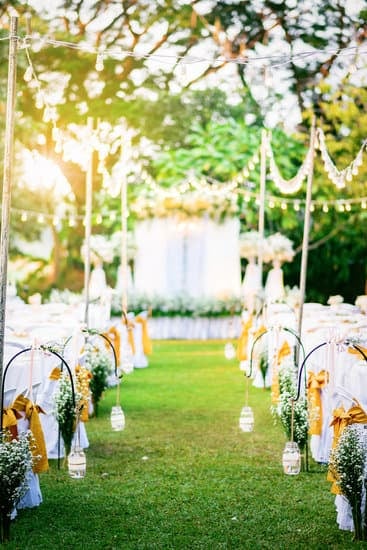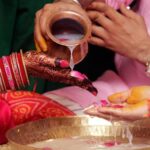When did wedding rings become popular? The answer to this question is a fascinating journey through history, tracing the symbolic significance and evolution of this timeless tradition. Wedding rings have long been cherished symbols of love, commitment, and unity between partners. The history of wedding rings dates back thousands of years, with origins rooted in ancient civilizations like Egypt and Rome.
In ancient times, wedding rings were often made from simple materials like reeds or hemp, symbolizing eternity and the unending circle of love. These early examples set the foundation for the significant role that wedding rings would come to play in relationships throughout history. As civilizations evolved, so too did the design and meaning behind these symbolic bands.
During the Medieval period in Europe, wedding rings began to take on more intricate designs and were often adorned with religious symbols or inscriptions. The act of exchanging rings became an essential part of marriage ceremonies, signifying the bond between husband and wife. In subsequent centuries, such as the Renaissance and Victorian Era, wedding rings continued to evolve in style and symbolism, reflecting the changing cultural ideals of each era.
Ancient Origins
Wedding rings have been a symbol of love and commitment for centuries, with their origins dating back thousands of years. The practice of exchanging rings during marriage ceremonies is believed to have originated in ancient civilizations such as Egypt and Rome. These early examples of wedding rings held deep symbolic meaning, representing the eternal nature of love and the binding commitment between two individuals.
In ancient Egypt, wedding rings were typically made from materials like hemp or reeds and were braided into circular shapes to symbolize eternity. The circle shape signified endless love that had no beginning or end, much like the unending cycle of life. In Rome, wedding rings were often made from durable materials like iron or gold, symbolizing the strength and permanence of the marital bond.
To further explore the ancient origins of wedding rings, let’s delve into some key points:
- In ancient Egypt, rings were worn on the fourth finger of the left hand because it was believed that this finger contained a vein directly connected to the heart, known as the “vena amoris” or vein of love.
- Ancient Roman wedding rings were often inscribed with romantic phrases or symbols, showcasing the importance placed on expressing affection and commitment through ornate designs.
- The exchange of wedding rings in these early civilizations marked not only a legal contract but also a spiritual union between two individuals, solidifying their shared journey through life together.
Medieval Europe
During the Middle Ages in Europe, wedding rings continued to hold significant symbolic value as they became more standardized in their design and usage. In medieval Europe, the tradition of exchanging rings during marriage ceremonies became more formalized, with different materials and styles being used to signify the union between two individuals. The giving and wearing of wedding rings symbolized a sacred bond and commitment between husband and wife, often accompanied by vows exchanged during the ceremony.
One interesting aspect of medieval European wedding rings was the use of inscriptions or engravings on the inner band. These inscriptions could be simple messages expressing love and devotion, or even intricate designs symbolizing eternity or faithfulness.
The act of personalizing wedding rings with these engravings added an extra layer of sentimentality to the already meaningful exchange of rings during the marriage ceremony. The symbolism attached to wedding rings during this time mirrored societal values around love, fidelity, and partnership, reinforcing the importance of marriage in medieval European culture.
Furthermore, in medieval Europe, the type of metal used for wedding rings also carried significance. Gold was a popular choice due to its durability and scarcity, symbolizing wealth and status within society. Silver was another common material used for wedding bands, representing purity and longevity in marriage. The evolution of wedding ring designs in medieval Europe reflected not only cultural beliefs about marriage but also societal norms and values that were upheld during this period.
Renaissance and Victorian Era
During the Renaissance and Victorian Era, wedding rings underwent significant transformations in design and symbolism. The cultural shifts during these periods greatly influenced the way in which wedding bands were perceived and worn. In the Renaissance, there was a revival of classical art and aesthetics, leading to intricate designs and patterns being incorporated into jewelry, including wedding rings. This era marked a departure from the simplicity of earlier ring styles.
Renaissance Symbolism
During the Renaissance, wedding rings began to symbolize not only love and commitment but also wealth and status. Intricate detailing such as gemstones, engravings, and filigree work became popular among the wealthy elite as a way to showcase their social standing through their choice of rings. Rings were often adorned with symbols of love like hearts, Cupid’s arrows, or clasped hands, reflecting the romantic ideals of the time.
Victorian Elegance
The Victorian Era brought its own set of changes to wedding ring designs. With Queen Victoria’s reign setting the tone for fashion and style, sentimentalism played a crucial role in jewelry trends. Mourning jewelry became popular after Prince Albert’s death in 1861, with black onyx or garnet stones being used in wedding bands to symbolize loss and remembrance. Additionally, the use of birthstones or colored gems gained traction as a way to personalize wedding rings further.
As society evolved during the Renaissance and Victorian Era, so too did the significance attached to wedding rings. The shifting cultural norms influenced not only how these rings were designed but also how they were perceived by individuals exchanging them as tokens of love and commitment. From ornate details symbolizing wealth in Renaissance times to sentimental expressions embodying personal connections in Victorian jewellery designs, wedding rings continued to hold a special place in people’s hearts throughout history.
Modern Times
Wedding rings have been a symbol of love and commitment for centuries, but their significance and styles have evolved over time. In modern times, the concept of wedding rings has taken on new meanings and designs that reflect the diversity of relationships and personal preferences. Today, couples have a wide range of options to choose from when it comes to selecting their wedding bands, from traditional gold bands to innovative designs made from alternative metals such as titanium or platinum.
In contemporary society, wedding rings are not just a symbol of marriage but also a reflection of individuality and personal style. Couples often opt for unique designs that speak to their personalities and values, whether it’s through intricate engravings, gemstone accents, or unconventional band shapes. The rise in popularity of non-traditional weddings has also influenced the types of wedding rings chosen by couples, with many opting for minimalist bands or matching sets that represent equality and partnership.
To cater to this growing demand for personalized wedding rings, jewelers now offer a wide array of customization options, allowing couples to create bespoke pieces that truly capture their relationship. From customizing metal finishes to incorporating birthstones or meaningful symbols into the design, the possibilities are endless.
As trends continue to evolve in the world of jewelry design, wedding rings remain a timeless tradition that continues to adapt to modern preferences while still honoring the symbolic significance they have held throughout history.
- Traditional gold bands
- Alternative metals like titanium or platinum
- Unique designs reflecting individual style
Popularity Surge
The popularity of wedding rings has seen a significant surge in the modern era, with these symbolic bands becoming an essential part of marriage ceremonies around the world. This begs the question: when did wedding rings become popular? The answer lies in a combination of historical traditions, societal norms, and marketing strategies that have contributed to their widespread acceptance and appeal.
Symbolic Meaning and Tradition
One of the key factors that have led to the popularity of wedding rings is their deep symbolic significance. The circular shape of a ring represents eternity and endless love, making it a fitting symbol for the commitment made in marriage. Additionally, the exchange of rings during a wedding ceremony is a tradition that has been passed down through generations, reinforcing its importance in Western cultures and beyond.
Social Acceptance and Marketing Influence
In addition to their symbolic meaning, the widespread popularity of wedding rings can also be attributed to societal norms and marketing influence. As marriage became more formalized and socially recognized over time, the exchange of rings became a standard practice to signify unity and loyalty between partners. Furthermore, jewelry companies have played a significant role in promoting wedding rings as must-have items for weddings, creating a market demand that further solidified their popularity.
Celebrity Influence
Celebrities have always played a significant role in shaping fashion trends, and wedding rings are no exception. Over the years, famous individuals have showcased their sparkling engagement and wedding rings, influencing the choices of many couples around the world. The impact of celebrities on popularizing certain styles and trends of wedding rings cannot be underestimated.
One example of celebrity influence on wedding ring trends is the rise of colored gemstones as centerpieces in engagement rings. When celebrities like Kate Middleton and Jessica Simpson flaunted their sapphire and ruby engagement rings, respectively, there was a surge in demand for similar designs. This shift from traditional diamond center stones to colorful gems brought diversity and creativity to the world of engagement rings.
Moreover, celebrity weddings often set the stage for new ring styles to gain popularity. For instance, when Blake Lively showcased her rose gold oval-cut engagement ring or when Kim Kardashian’s multi-carat cushion-cut diamond ring made headlines, these designs became highly coveted by couples seeking unique and glamorous pieces.
The allure of celebrity weddings extends beyond just the ceremony itself, as fans are eager to emulate every detail including the exquisite wedding rings worn by their favorite stars.
| Example | Celebrity | Impact |
|---|---|---|
| Colored Gemstones | Kate Middleton | Rise in demand for sapphire center stones |
| Unique Designs | Kim Kardashian | Trend towards cushion-cut diamond rings |
Customization and Trends
Wedding rings have been a symbol of love and commitment for centuries, but it wasn’t until the Middle Ages that they started to become popular as we know them today. The tradition of exchanging rings during wedding ceremonies can be traced back to ancient civilizations such as Egypt and Rome, where they were believed to symbolize eternity and the unbroken bond between two individuals.
However, it was in Medieval Europe that the practice of wearing wedding rings on the fourth finger of the left hand became more commonplace, due to the belief in the “vena amoris” or vein of love that was thought to run directly from this finger to the heart.
As time passed and cultures evolved, so did the designs and symbolism of wedding rings. During the Renaissance and Victorian eras, intricate engravings and gemstones began to adorn these bands, symbolizing wealth and status. The use of diamonds in engagement rings became popular during the Victorian era, thanks in part to Queen Victoria herself receiving a diamond ring from Prince Albert. This era also saw an emphasis on sentimental motifs such as hearts, flowers, and bows in ring designs.
In modern times, wedding ring trends have shifted towards personalization and individuality. Couples are increasingly opting for unique designs that reflect their personalities and values. From custom-made bands featuring birthstones or meaningful engravings to non-traditional materials like wood or meteorite, there is a growing demand for personalized wedding rings. This trend towards customization allows couples to create pieces that are not only symbols of their commitment but also expressions of their unique love story.
| Wedding Ring Trends | Growing Popularity |
|---|---|
| Customization with birthstones or engravings | Increasing demand for personalized designs |
| Non-traditional materials like wood or meteorite | Couples seeking unique styles |
Conclusion
Wedding rings have a long and rich history, dating back to ancient civilizations such as Egypt and Rome. Throughout the ages, these symbolic bands have evolved in design and significance, reflecting the customs and beliefs of different cultures. From simple braided bands to intricate diamond-encrusted rings, the styles may have changed, but the underlying sentiment remains the same – a symbol of love, commitment, and unity.
In contemporary society, wedding rings remain a cherished tradition that holds deep meaning for couples around the world. The surge in popularity of wedding rings can be attributed to various factors, including cultural influences, marketing strategies, and the desire for couples to express their unique love story through personalized ring designs. Celebrities also play a role in shaping trends in wedding jewelry, inspiring many to opt for extravagant or non-traditional ring styles that reflect their individual personalities.
As we look towards the future, it is clear that the tradition of exchanging wedding rings will continue to endure. The growing trend of customization and unique designs allows couples to showcase their creativity and personal style through their choice of rings.
Despite changing fashion trends and societal norms, one thing remains constant – the timeless appeal of wedding rings as a symbol of everlasting love and commitment. So whether it’s a vintage-inspired rose gold band or a sleek platinum ring, the essence of what wedding rings represent remains unchanged – a tangible reminder of the enduring bond shared between two individuals.
Frequently Asked Questions
When Did Marriage Rings Become a Thing?
Marriage rings have been a symbol of commitment for centuries, with the tradition dating back to ancient Egypt around 2800 BC. These early rings were usually made of reeds and hemp, symbolizing eternity.
Who Popularized Wedding Rings?
Wedding rings gained popularity in Western cultures during the Middle Ages when the Romans started the tradition of wearing them on the 4th finger of the left hand, known as the “ring finger.” The concept was later adopted by Christians as a symbol of love and devotion.
Did Men Wear Wedding Rings in 1900?
In 1900, it was not common for men to wear wedding rings. The practice was mainly reserved for women, who would wear a ring to signify their marital status. Men only started wearing wedding bands regularly around World War II, as a reminder of their wives back home while they were away serving in the military.

I have been involved in marriages for over 20 years helping couples and singles understand more about them.





